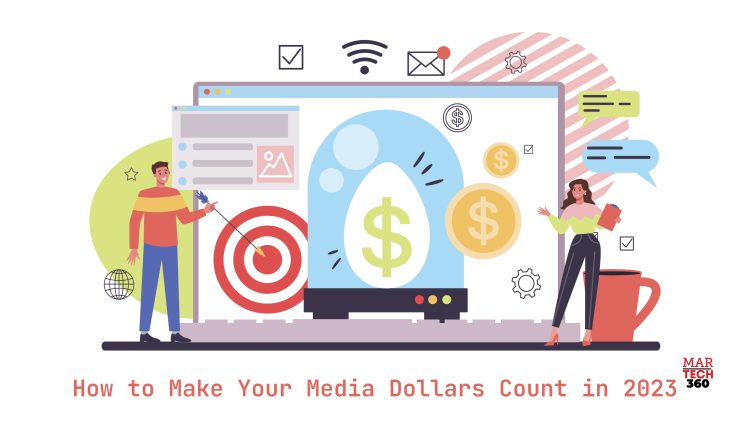The media landscape is changing faster than ever, and marketers need to adapt to the shifting consumer behavior and preferences, while also dealing with reduced budgets and resources.
In this vast and growing media landscape, it can be difficult to find your audience and ensure dollars are performing. How can you overcome these challenges, maximize awareness, and get more milage out of every media dollar?
There are critical trade-offs that marketers must take to engage their audiences and drive revenue in the coming months.
Trade-off #1: Shift your media budget from linear TV to CTV for better performance
We are seeing unprecedented consumer adoption of CTV. Industry experts predict that the trend will continue, and more households will subscribe to streaming services, over traditional linear TV. CTV is becoming the preferred service because of the ease of access, extensive content on demand and, diverse high-quality content.
Streaming TV has emerged as a solvent business in the entertainment industry, as more people turn to online platforms for video content. According to the latest reports, Netflix remains the leader in the global streaming market, with 230.1 million subscribers. Disney+ also features a large subscriber base of with 161.8 million subscribers as well as Paramount and Discovery’s HBO MAX with 55.9 million and 96.1 million subscribers, respectively. These numbers show that streaming services have large and growing customer bases.
For advertisers, the advantages of CTV over linear TV include higher reach especially with younger demographics, lower cost per impression, better targeting, more creative ad options, and measurement improvements.
Trade-off #2: Invest in first-party data instead of third-party data
Investing in your own first-party data has become a critical focus for many brands and advertisers to boost awareness and performance, especially as we prepare for a cookieless environment. Once you truly get to know your audience, the personalization possibilities with first-party data are numerous, including a customer´s previous browsing or purchasing history. First-party data will take you to the second phase of your strategy, moving from simply building awareness to building loyalty and driving customer retention by making your customers feel heard and valued.
Also Read: How To Capture Consumer Attention During Peak Seasonality?
The primary benefits of having a first-party data strategy include:
- Reach more of your ideal customers: First-party data allows you to segment your audience based on their behavior, preferences, and interests.
- Create personalized experiences: You can use your first-party data to send customized content and offers that match your customers’ needs and expectations.
- Improve your marketing return on investment (ROI): First-party data helps you to optimize campaigns and measure their effectiveness across channels and platforms.
- Strengthen your customer relationships: With first-party data, you can build trust and loyalty with customers and help them get more value from your brand.
- Uphold privacy and security: First-party data enables compliance with data regulations and protect your customers’ privacy.
Trade-off #3: Do more experimentation rather than stick with the same media planning you’ve relied on in the past
Dollars should be balanced between tried-and-true channels, like search and digital, while also introducing emerging opportunities to experiment, invest, or simply observe for future consideration. There’s a reason why we’re hearing a lot of buzz about retail media, gaming, AI, and other newer opportunities to reach audiences. However, that doesn’t mean marketers should dive headfirst into emerging channels.
The global search enterprise is projected to grow 13.1% CAGR (Compound Annual Growth Rate) from 2022 until 2028 based on a recent industry report. And search, while a long-standing advertising channel, is entering a new phase of evolution with game-changing AI technology that will have a transformative impact on advertising applications within the search experience.
Another emerging channel that is receiving a lot of attention is retail media, one of the fastest-growing segments within digital advertising because it provides a direct connection between online shopping and advertising, increasing conversion rates and customer loyalty. IAB Europe forecasts retail media ad spend to reach €25bn in Europe by 2026. Investing in retail media,
also enables advertisers to overcome the loss of third-party cookies and unlock more first-party data.
If you want to boost your ROI, you should try different types of ads. Some ads are more effective than others because they attract customers with their location, interactivity, and rich information. These ads can increase brand awareness, preference, engagement, or downloads. Some examples are native ads, multimedia ads, or store ads.
Trade-off #4: Consolidate media efforts with technology investments that maximize reach, minimize duplicity, and reduce costs
An integrated media platform is a vital tool for achieving optimal reach, avoiding duplicity, and lowering costs and time in the current media environment that is diverse and competitive. The advertising technology options available today are daunting. By centralizing efforts and investments, rather than a non-consolidated media approach, advertisers can access premium content, extend campaigns seamlessly and measure performance effectively. Therefore, an integrated media platform is not only a desirable option but a necessary approach for advertisers who want to succeed in the modern media landscape.
Ultimately, marketers face a changing media landscape in a time of economic uncertainty that requires them to adapt their strategies to engage their audiences, drive revenue, and do more with less in 2023.


Comments are closed.